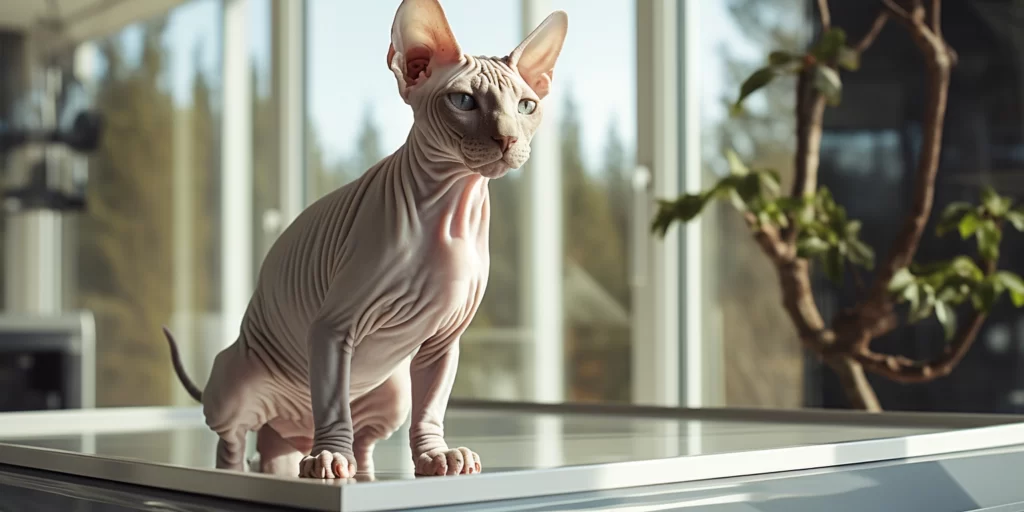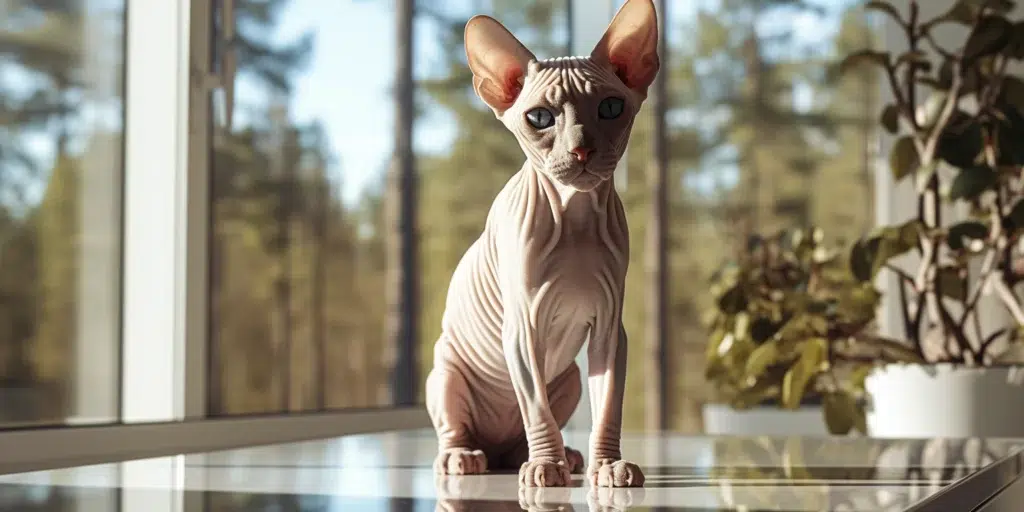When it comes to the unusual and fascinating Sphynx cat breed, prospective pet owners often wonder about the differences between male and female cats. It’s a common inquiry made by those interested in adopting a feline friend, as many believe gender plays a significant role in a pet’s behavior and care requirements. In this blog, we’ll delve deep into the Male vs Female Sphynx cat debate, shedding light on the distinguishing traits of each gender to help you make the perfect choice for your household.
The Sphynx, celebrated for its lack of fur, has captured hearts with its unique appearance and affectionate nature. This breed is known for its energetic and sociable personality, regardless of gender. Yet, when it comes down to the Male vs Female Sphynx cats, there are subtle nuances that may influence an owner’s preference. From size to temperament and health considerations, understanding these differences is essential for Sphynx cat enthusiasts. Read on as we explore what sets male and female Sphynx cats apart.

Visual Differences
| Male | Female | |
|---|---|---|
| Average height (adult): | 9 – 10 inches | 8-10 inches |
| Average weight (adult): | 8-12 lbs | 6-8 lbs |
| Lifespan: | 9-15 years | 10-15 years |
| Exercise: | High | High |
| Grooming needs: | High | High |
| Family-friendly: | Yes | Yes |
| Other pet-friendly: | Varies | Varies |
| Trainability: | Moderate-High | Moderate-High |
Male Sphynx Overview
Male Sphynx cats generally present with a sturdy and more muscular build compared to their female counterparts. They exhibit a bold and outgoing nature, often seeking attention and affection from their human companions.
The playful and curious traits of the male Sphynx make them fantastic entertainers within a household. They tend to be more dominant and could be territorial – traits that may or may not become pronounced depending on whether they are neutered.
You Might Like: Male Names for Sphynx
Training A Male
Male Sphynx cats can be trained with relative ease due to their intelligent and personable disposition. However, during their training, it’s crucial to establish strong leadership to prevent them from becoming too dominant or engaging in undesirable behavior. Consistent positive reinforcement training methods work best with males, as they respond favorably to rewards like treats or playtime for good behavior.
Health & Care
The most striking requirement of a male Sphynx cat is its grooming needs. Their lack of fur doesn’t equate to low maintenance; instead, they need regular baths to remove the oil buildup on their skin. Additionally, males can be prone to certain hereditary health issues such as hypertrophic cardiomyopathy and dental problems, so regular veterinary check-ups are vital.
Suitable for:
Generally, a male Sphynx cat is suitable for families or individuals looking for an interactive and engaging pet. Their high energy levels and desire for playtime fit perfectly with those who have the time to invest in socializing and entertaining their feline friend. The male Sphynx’s sociable nature also makes them great companions for multi-pet households, provided proper introductions and socialization are observed.

Female Sphynx Overview
In contrast to males, female Sphynx cats are often more delicate in build and can be less boisterous. They possess a level of grace and poise that is distinctively feminine. While they share the breed’s signature sociable personality, females may show a greater degree of independence compared to males. They are nurturing by nature, making them affectionate family pets.
Training A Female
Training a Female Sphynx cat relies heavily on patience and gentle reinforcement. Females can be slightly more sensitive than males, so it’s important to use a gentle approach during training sessions. Promoting desirable behaviors with treats and praise can lead to successful training outcomes with females as it encourages a positive association with learning new tasks.
You Might Like: Female Names for Sphynx
Health & Care
Female Sphynx cats require similar grooming routines as males due to their hairless skin. Keeping up with their skincare is essential as they can develop skin issues if not bathed regularly. Additionally, spaying is a critical aspect of a female Sphynx’s health care as it prevents unwanted litter and potential health risks associated with the reproductive system.
Suitable for:
Female Sphynx cats are ideal for homes that appreciate a slightly less rambunctious companion but still seek the warm-hearted nature of this breed. They may do well in quieter households or ones that can provide a calm environment for this contemplative creature. Affectionate and loyal, female Sphynxes can form deep bonds with their caretakers.
Which One Is Right for You?
Choosing between a male or female Sphynx cat ultimately comes down to personal preference and lifestyle fit. Both genders bring their unique qualities that make them wonderful companions. Consider the energy levels, time commitment for socialization and play, grooming requirements, territory management for males, and the potential independence of females when making your decision.
In families with small children or other pets, thoroughly consider the dynamic that either sex would bring into your home. Remember that individual personality can vary greatly within a breed; some males may be less dominant than others whilst some females may be more playful than average.

Conclusion
Deciding between a Male vs Female Sphynx cat can be challenging but knowing the subtle differences can help shape your choice. Regardless of gender, Sphynxes are known for their loving nature and unique presence in any home.
They require committed caregivers ready to attend to their physical and emotional needs. By weighing the characteristics of male and female Sphynxes against your lifestyle and preference, you’ll find the perfect match to share your life with this extraordinary breed.